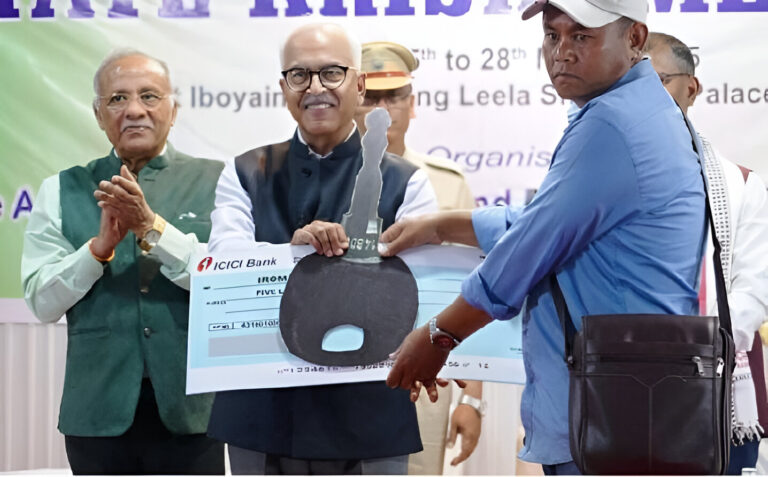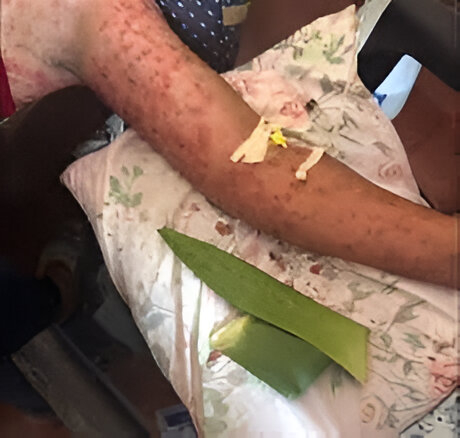Renowned Theatre Director Ratan Thiyam Calls for Collaborative Efforts to Preserve Manipur’s Cultural Heritage
Summary of the News
On January 25, 2025, renowned theatre director and Padmashri awardee, Dr. Ratan Thiyam, emphasized the importance of preserving Manipur’s cultural heritage through collaborative efforts. Speaking at the conclusion of the 21st Ningtham Khumhei Shumang Leela Festival in Imphal, he advocated for a collective approach to safeguarding the state’s rich artistic and cultural legacy. Dr. Thiyam highlighted the necessity of promoting Manipur’s 35 recognized art forms while fostering cultural integration and unity among communities. He also proposed the establishment of a world-class cultural complex to facilitate innovation and sustainability in the arts.
Preserving Manipur’s Cultural Heritage: A Collective Responsibility
Manipur’s cultural heritage is like an intricate mosaic—each piece representing a unique tradition, art form, or belief. Yet, in today’s fast-paced, modern world, this beautiful tapestry faces the risk of unraveling. Let’s take a deep dive into the call made by Padmashri Dr. Ratan Thiyam and explore the ways we can work together to preserve this invaluable legacy.
The Significance of Manipur’s Cultural Heritage
When it comes to culture, Manipur is truly exceptional. From its iconic Ras Leela dance to its traditional handloom crafts, the state brims with artistic brilliance. The Shumang Leela, a traditional courtyard theatre form, is not just entertainment—it is a mirror reflecting the state’s societal norms and values. These art forms tell stories, hold history, and connect generations.
However, this heritage is under threat. Globalization, modern lifestyles, and a lack of interest among younger generations are slowly chipping away at the foundations of these traditions. It’s like watching an ancient manuscript fade with time, each page turning to dust.
Dr. Ratan Thiyam’s Vision for Preservation
As one of India’s most celebrated theatre directors, Dr. Ratan Thiyam has spent decades championing the arts. At the Ningtham Khumhei Shumang Leela Festival, he pointed out that preserving Manipur’s cultural heritage is a collective responsibility—not something a single individual or organization can accomplish alone.
A World-Class Cultural Complex
Dr. Thiyam proposed establishing a cultural complex dedicated to Manipur’s artistic legacy. Imagine a vibrant hub where traditional performances meet modern innovations—a place where artists collaborate, audiences are inspired, and future generations learn to carry the torch forward. This complex could become a global destination for cultural enthusiasts, much like a lighthouse guiding ships to safety.
Promoting Unity Through Cultural Identity
One of the most profound aspects of Dr. Thiyam’s message was his focus on unity. Manipur, like many regions, is home to diverse communities. By promoting cultural identity through the arts, we can bridge divides, fostering harmony and a sense of shared belonging. It’s a reminder that, despite our differences, we are all connected by the stories we tell and the traditions we uphold.
The Role of Cultural Integration and Tourism
What’s the key to keeping a culture alive? Integration and visibility. Dr. Thiyam emphasized the need to integrate Manipur’s 35 recognized art forms, bringing them together under a unified banner.
Tourism, too, plays a massive role. By promoting cultural tourism, we can introduce the world to Manipur’s rich heritage. Think about it—when people from across the globe experience these traditions, they not only contribute to the local economy but also help spread awareness. It’s a win-win, like planting seeds that grow into a forest of global admiration for Manipur’s arts.
Challenges in Preserving Cultural Heritage
Preserving culture isn’t without its challenges. Here are a few obstacles that need to be tackled:
- Youth Disinterest: The younger generation often sees traditional art forms as outdated. How do we make ancient traditions relevant in the age of TikTok and Instagram?
- Resource Constraints: Funding for cultural preservation is limited. While government initiatives like the construction of 37 tribal museums are commendable, much more needs to be done.
- Fragmentation: Divisions within communities can sometimes hinder collective efforts. Promoting unity through culture is easier said than done.
- Modernization Pressures: The rapid modernization of society often leads to the sidelining of traditional practices. Balancing progress with preservation is a tightrope walk.
Practical Steps Towards Preservation
So, what can we do to help? Here are some actionable ideas:
1. Involve Communities
Community involvement is key. Festivals, workshops, and local initiatives can reignite interest and ensure traditions are passed down.
2. Leverage Technology
Why not use digital platforms to document and share Manipur’s art forms? Virtual museums, YouTube channels, and online masterclasses can reach younger audiences worldwide.
3. Educate the Next Generation
Incorporating cultural education into school curriculums can foster pride among young Manipuris. After all, knowledge is the first step toward preservation.
4. Support Artists
Artists are the heartbeat of any culture. Providing financial aid, grants, and platforms for their work can go a long way in sustaining the arts.
5. Advocate for Policies
Push for governmental policies that prioritize cultural preservation, from protecting historical sites to funding artistic endeavors.
Conclusion: A Shared Responsibility
Preserving Manipur’s cultural heritage isn’t just about saving art forms—it’s about safeguarding an identity, a legacy, and a way of life. Dr. Ratan Thiyam’s call to action is a wake-up call for all of us. Whether you’re an artist, a policymaker, or simply someone who appreciates the beauty of culture, you have a role to play.
Let’s work together to ensure that Manipur’s cultural tapestry remains vibrant, not just for us but for generations to come.
FAQs
1. Why is Manipur’s cultural heritage important?
Manipur’s cultural heritage reflects its history, values, and identity. Preserving it helps maintain the state’s unique identity and fosters unity among its communities.
2. What challenges does Manipur face in preserving its culture?
Key challenges include youth disinterest, limited resources, modernization pressures, and community fragmentation.
3. How can tourism help in preserving cultural heritage?
Cultural tourism brings global attention to local traditions, generating revenue and spreading awareness, which can be reinvested into preservation efforts.
4. What is Dr. Ratan Thiyam’s proposal for cultural preservation?
He proposed creating a world-class cultural complex to serve as a hub for collaboration, performance, and education in Manipur’s arts.
5. How can individuals contribute to preserving culture?
Individuals can participate in cultural events, support local artists, advocate for preservation policies, and use technology to document traditions.



